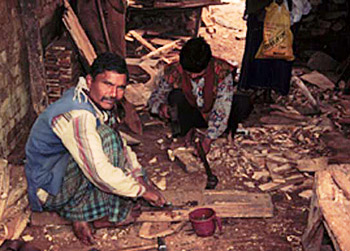 Barhai caste is a prominent Hindu caste mainly found in northern India. Barhai caste is known by different names such as Panchali, Khati Kolash, Chowrasia, and Tarkhan. Interestingly Barhai caste is mostly found in towns as compared to village areas. In Hindi language and Urdu language, the term Barhai, literally means carpenter. According to traditional legends, Barhais have descended from Lord Vishwakarma. It is said that there were five sons of Lord Vishwakarma and one of them was called Barhai and he got engaged in carpentry. From the other sons of Lord Vishwakarma the Lohar, Sonar, Thathera and Kumhar communities have descended.
Barhai caste is a prominent Hindu caste mainly found in northern India. Barhai caste is known by different names such as Panchali, Khati Kolash, Chowrasia, and Tarkhan. Interestingly Barhai caste is mostly found in towns as compared to village areas. In Hindi language and Urdu language, the term Barhai, literally means carpenter. According to traditional legends, Barhais have descended from Lord Vishwakarma. It is said that there were five sons of Lord Vishwakarma and one of them was called Barhai and he got engaged in carpentry. From the other sons of Lord Vishwakarma the Lohar, Sonar, Thathera and Kumhar communities have descended.
Barhai community have a conventional caste council. Barhai community is a Hindu community and they worship Lord Vishwakarma. Barhai community consists of a number of endogamous sub-divisions; the main ones include the Kanaujiya, Lohar, Kamarkala, Koka, Maghaiya, and Mathuria. They speak a dialect of Hindi language. Barhai caste also has some exogamous septs, which are named after villages. However, in some localities they have no septs, but only comprise surnames. In their community, people with the same surname cannot intermarry. During their wedding ceremony, Brahmin priests are employed. When wedding procession reaches the village of the bride it halts near the temple of Lord Hanuman. In the community of Panchal Barhais, the bridegroom does not wear a crown in fact ties a bunch of flowers to his turban. Divorce and widow remarriage are permitted in Barhai communities. However, a widow is prohibited to marry the brothers of her first husband. Barhai community has certain indigenous traditional beliefs. They consider the sight of a mongoose and of light-grey pigeon or dove as lucky signs. These burn the dead and throw the ashes into a stream by employing the servicing Brahmin priest.
Barhai community is associated with their traditional work of carpentry. Today, some of them are also involved in manufacturing of furniture, whereas some have moved to cultivation. In some of the northern districts of the country the Barhai community makes and mends the plough and other wooden implements required in agricultural activities. They are also associated with making carts and building or repairing houses. In most of the cities the Barhais are quickly acquiring an increased degree of skill in order to meet the increasing demands for a better and extensive class of houses and furniture.




















